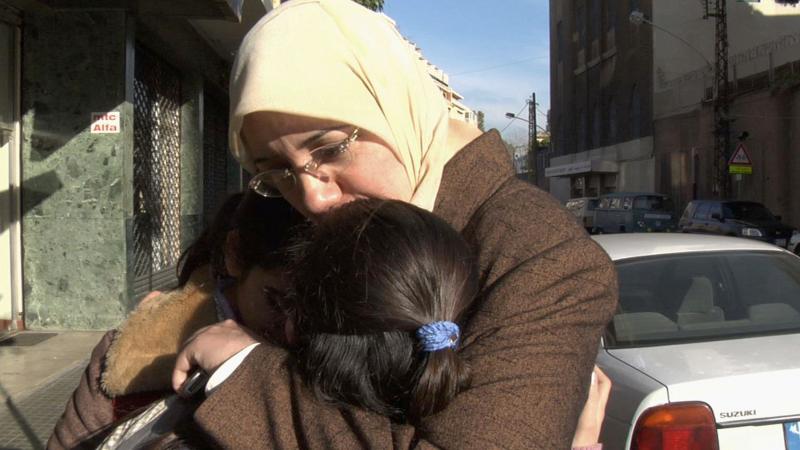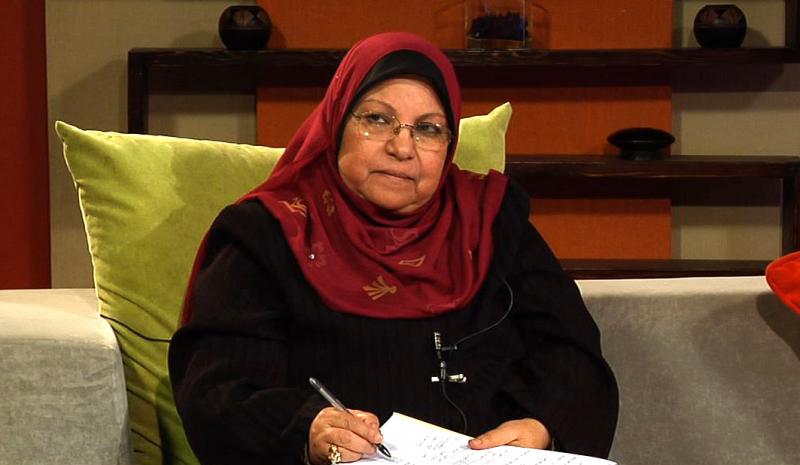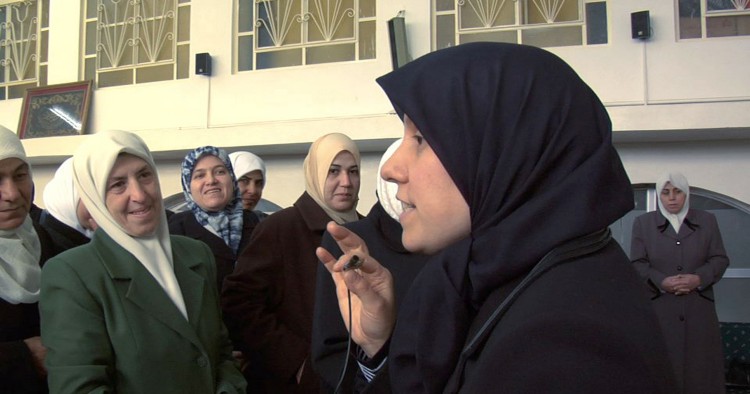Last year, I completed an hour-long documentary, Veiled Voices, profiling the role that women can play as religious leaders in the Middle East. This essay briefly discusses my discoveries over the four years working on the project and the decisions I made regarding how to responsibly and visually represent these women on film.
In spring 2005, I was teaching as a Fulbright Scholar in a university about ten miles north of Beirut. I arrived two weeks before the former Prime Minister of Lebanon, Rafik Harriri, was assassinated and stayed through the elections in the summer. It was a historic time to be teaching documentary filmmaking. I would arm my students with video cameras before they would leave for downtown Beirut to shoot, sleep, and protest, calling for the withdrawal of Syrian troops from the country.
In summer 2005, Dr. Karen Bauer, a childhood friend of mine, was finishing her PhD dissertation research in Damascus, Syria. She had been interviewing contemporary religious scholars on their views on four Ayas in the Qur’an having to do with women -research that was fresh and fascinating.
Karen contacted me after she had interviewed Huda al-Habash. Karen was struck by Huda’s modern outlook on her faith and how she balanced modernity and tradition. Karen suggested that looking at these women leaders might make a great documentary. After some hesitation, as I pondered how we could obtain funding for such a project, I agreed that we should go for it. This collaborative effort shifted my film work in an amazing new direction.
After a year and half of research, I began to shoot Veiled Voices on a shoestring budget. Beirut, Lebanon was my base while I traveled to Damascus and Cairo to interview and follow the public and private lives of women who were taking leadership roles in Islam. The result was an hour-long documentary.
Veiled Voices investigates the world of female Muslim religious leaders, as seen through the eyes of three women in Lebanon, Egypt, and Syria. Drawing me to these stories were intriguing questions: Do these women “practice what they preach” within their homes? How do their private worlds influence their public roles and vice versa? What I discovered was quite extraordinary.
Initially, making Veiled Voices was a struggle. Although I had built a reputation among my peers as a solid filmmaker, I was aware that filming a documentary on any subject related to Muslim women would likely raise eyebrows. This attitude stems from a deep mistrust on all sides of how this subject matter has typically been represented in the media. I knew I had to be extremely careful about how I approached visual representation of these women in the film.
Traditional, full-length fiction film is structured in three acts. Act One introduces characters and conflict; Act Two, the longest, addresses the center of the story; and Act Three concludes and resolves the conflict. The challenge of making a film like Veiled Voices is how to delve deeply into scholarship while still being accessible and appealing to a mainstream audience. I also wanted to engage mainstream stereotypes and progress beyond them. Therefore, I structured the film clearly in three acts, yet moved back and forth between the three women’s stories.
A former student, Samer Chehab, brought Ghina Hammoud’s work to my attention in 2005. “Sheikha Ghina,” as she was known, had her own Islamic Center and also made television appearances. For many years, she taught lessons on Future Television, a station owned by the Harriri family. I knew she was divorced, but not much else about the circumstances. Nor did I know if she would share her personal story with me.
On a fateful day after filming Sheikha Ghina for several weeks, she opened up to me. We were sitting in a café along the corniche and had just ordered breakfast. I was prepping my camera when a passerby recognized Sheikha Ghina and stopped to ask her a religious question. By the time she finished her answer, my camera was on and ready to go. The gentleman left his card. As she looked at it, she joked that he was a heart surgeon. This humorous moment transitioned into a startling confession. She told me about how she had endured years as a battered wife. The story poured out of her. I was riveted.
This confession created a huge dilemma for me. It was “juicy” footage for a filmmaker and could open doors to many mainstream festivals. I could suddenly shift my entire focus and just make a film about her. But would that provide a fair portrayal of Muslim women leaders? Would I not be abandoning my original premise? What about my responsibility to the story as a whole?
I chose to tell the original story. I realized that to tell Sheikha Ghina’s story in a responsible fashion I had to focus on how the overall story was structured. In Act One, I began with the personal journey of Ghina Hammoud, consciously playing into and engaging general audience expectations and stereotypes. Hammoud divorced her husband after suffering years of domestic violence. The beginning of her story plays to stereotypes. 
The film then moves to the introduction of Dr. Su’ad Saleh, who speaks about the concept of what marriage ought to be in Islam and how she married her husband for love. She speaks about this openly on a television show, demonstrating that she has no trepidation about sharing her personal life as well as her scholarly opinions in a public setting. Huda al-Habash has had a public role as an educator in a mosque in Damascus and travels across the Middle East teaching. In her introduction, I focus primarily on her husband, who takes over domestic duties when she teaches abroad.
Act Two focuses on the public role women can play in Islam within institutions and as advisors to their students. That public role is not without challenges. Dr. Saleh wants to be a muftiya, a recognized religious scholar, but faced opposition in the al-Azhar Council, which voted against her petition to join. In contrast, the Grand Mufti in Syria has initiated a program to support women as muftiyas, and al-Habash has institutional support. Hammoud takes a very open approach to how she teaches her students and sees her belief in Islam as a means to overcome her personal struggles.
Act Three looks to the future, relating the stories of the leaders’ daughters and their views on the role of women in leadership and society. In an overall arc, we watch how Hammoud overcame her divorce and rose to become a very influential independent woman, how Dr. Saleh continues her work despite her public challenges, and how al-Habash succeeds by virtue of her support in her public and private worlds.
The structure pulls apart the web of stereotypes the viewer may have and, at the same time, reveals the challenges that female leaders continue to face, thus providing a fair and careful representation of each woman. The viewer may not agree with them, but at the same time cannot deny that they are in control of their fates, however problematic their obstacles.
Five years after teaching in Lebanon, Veiled Voices was finished. It was released in 2009. The film has screened in festivals throughout the world and reached a potential audience of 118 million people. I also traveled across the United States screening in universities and community settings. These screenings were the most meaningful, as I could talk one-on-one with Muslim and non-Muslims about their discoveries after watching the film. It was a privilege to film these women’s remarkable stories.
I made the discovery as a woman and filmmaker that although cultures may differ, the struggle for recognition and respect for women continues to be universal. It was amazing to see women achieve success using their own cultural and religious frameworks.
The Middle East Institute (MEI) is an independent, non-partisan, non-for-profit, educational organization. It does not engage in advocacy and its scholars’ opinions are their own. MEI welcomes financial donations, but retains sole editorial control over its work and its publications reflect only the authors’ views. For a listing of MEI donors, please click here.













